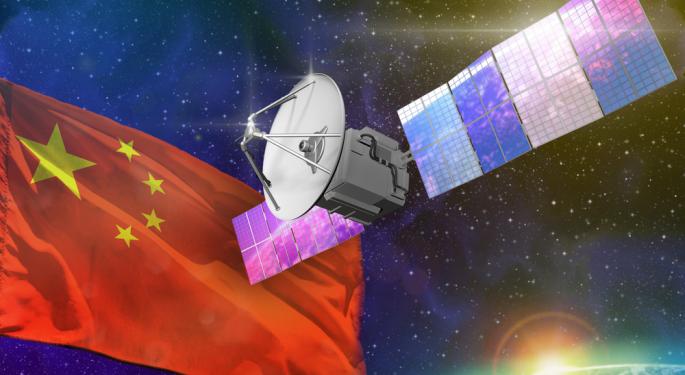After US Sanctions, China Deploys Indigenous OS In Space To Cut Foreign Reliance
China has reportedly trialed a domestically developed operating system aboard a small satellite, a move aimed at reducing dependence on foreign software in space-based applications.
Researchers used the OpenHarmony real-time operating system (RTOS)—a streamlined version of Huawei Technologies’ HarmonyOS—onboard the Dalian-1 Lianli CubeSat during more than 1,000 hours of in-orbit experimentation, reports the South China Morning Post.
The test showed marked improvements in speed and stability for microsatellite operations.
Also Read: Rocket Lab’s Next Launch In 4 Days — Is RKLB Ready For Liftoff?
Yu Xiaozhou, a professor at the Dalian University of Technology and lead author of the study, stated that the mission demonstrated notable gains in system responsiveness and reliability thanks to the home-grown software platform, the report adds.
OpenHarmony replaced traditional firmware and foreign operating systems commonly used in Chinese microsatellites.
The satellite, released from the Tiangong space station, also ran on a chip manufactured in China, creating what researchers called a fully indigenous software-hardware solution.
The technology enabled subsystems like the magnetometer, sun sensor, and orientation unit to operate with microsecond-level responsiveness while consistently delivering high-frequency data updates, the report further adds.
Beyond its performance, the system endured extended pre-deployment conditions, including 253 days in external storage outside the space station.
Once activated, it produced sub-meter resolution images of Earth—capabilities that could aid regional planning efforts in coastal areas such as Dalian.
The software milestone stems from China’s broader effort to wean itself off foreign tech, a push accelerated after Huawei Technologies was added to the U.S. trade blacklist in 2019.
The ban restricted access to American tech tools and catalyzed initiatives like OpenHarmony, which is now overseen by the OpenAtom Foundation and applied across sectors, including embedded systems and aerospace.
Previously, Chinese satellites had relied on open-source foreign software such as FreeRTOS, which posed limitations under export restrictions.
The latest mission marks a significant step toward technical independence in China’s satellite development roadmap.
Read Next:
Image: Shutterstock/Dancing_Man
© 2025 Benzinga.com. Benzinga does not provide investment advice. All rights reserved.
Posted-In: AI Generated China satellitesEquities News Markets General



